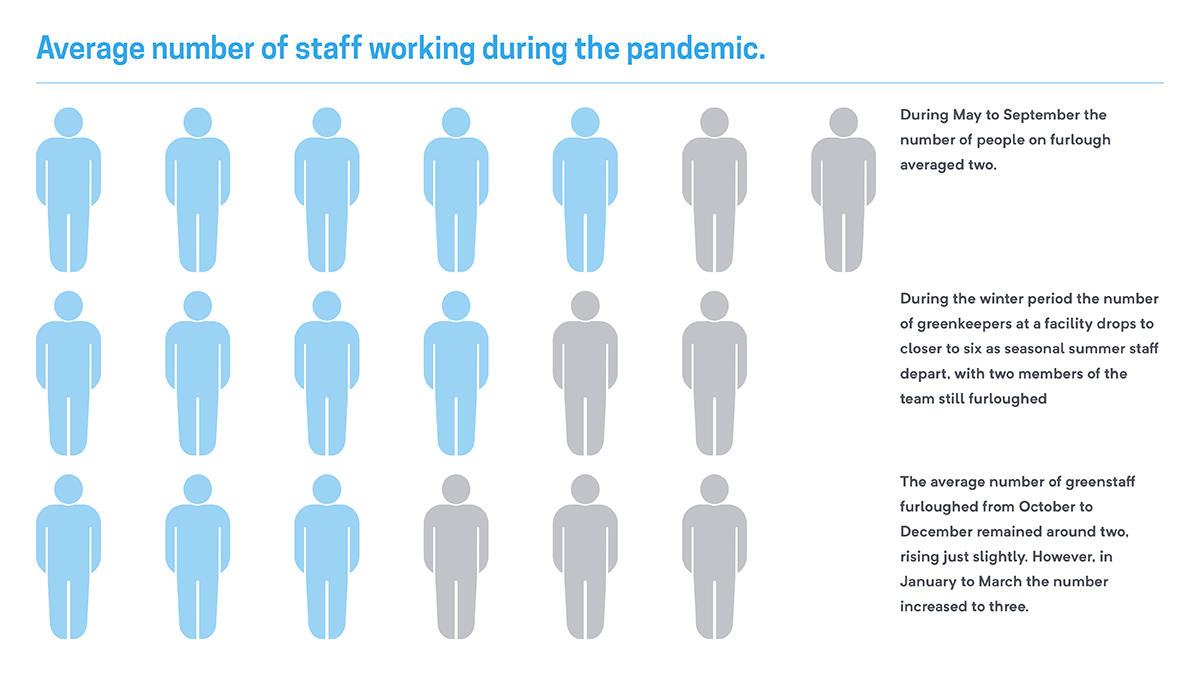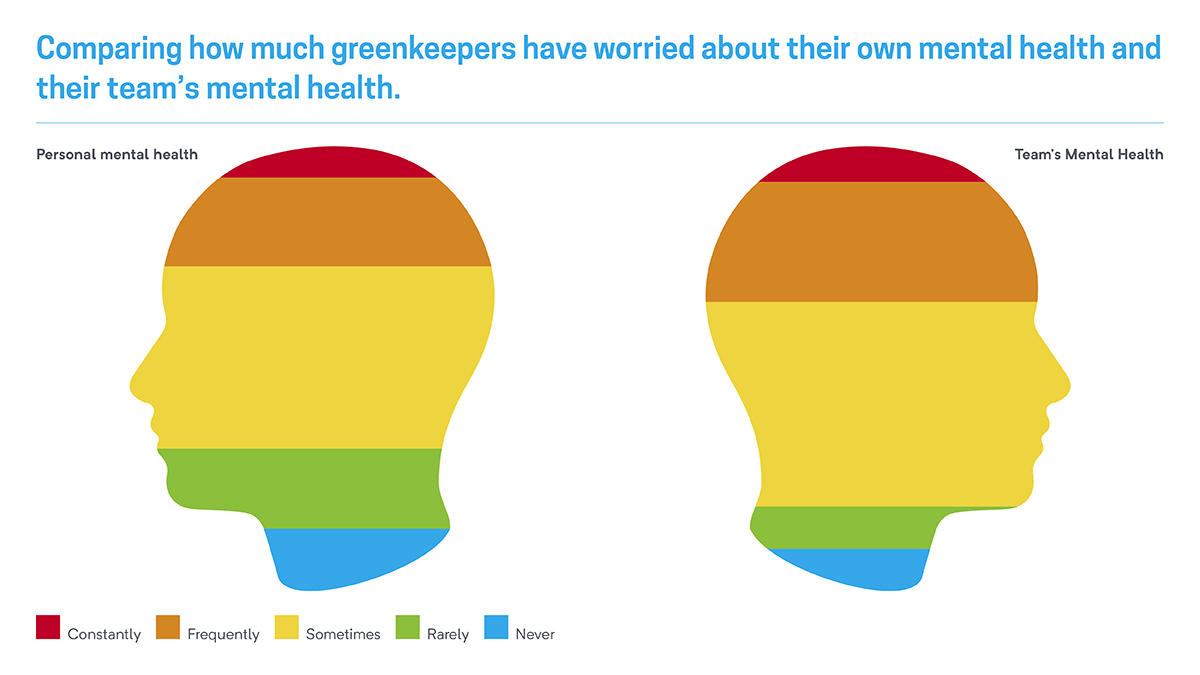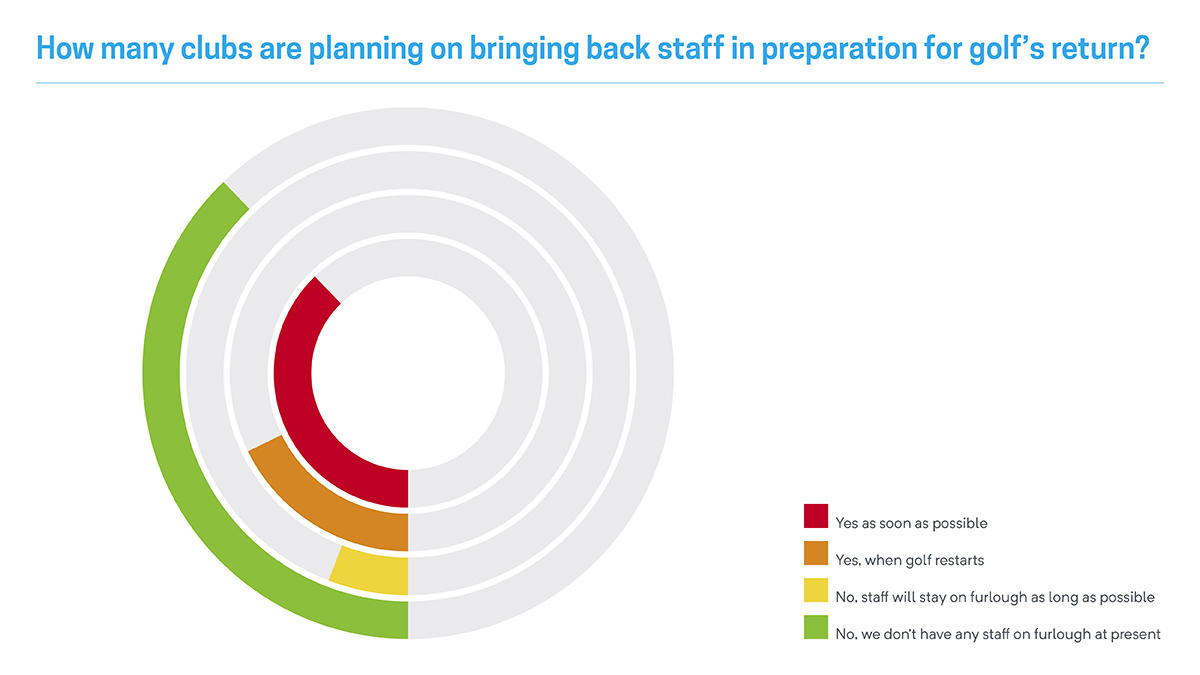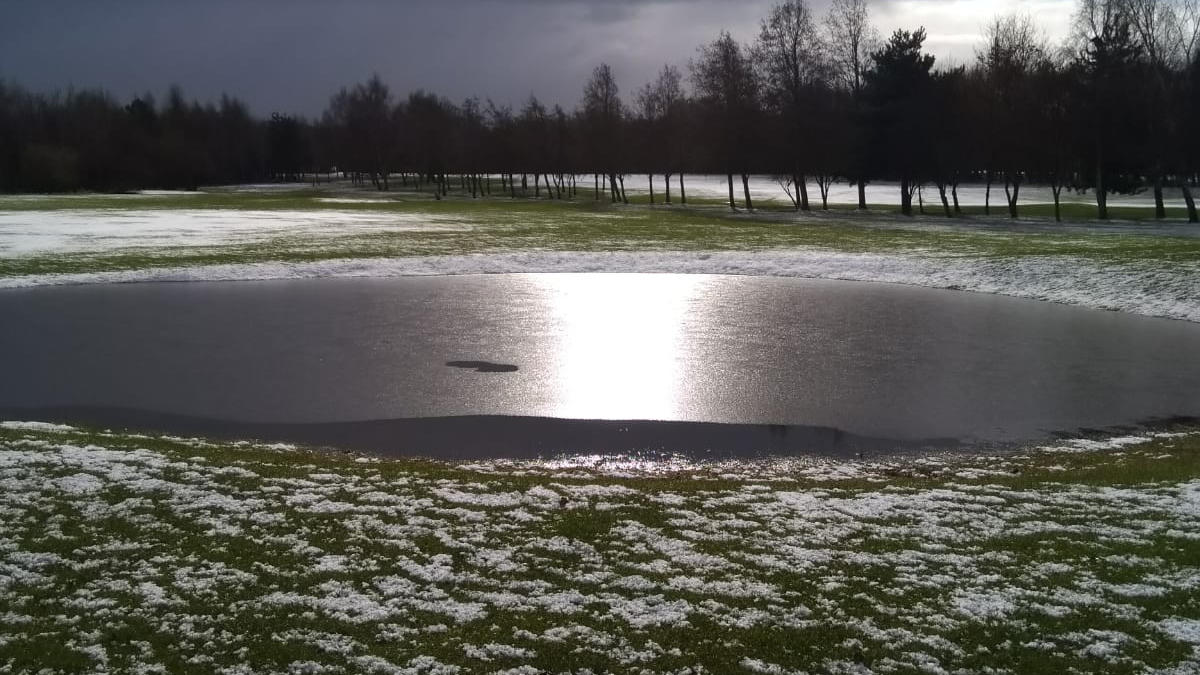- Homepage
- News and Features
- COVID-19: The view from the greenkeepers' shed
COVID-19: The view from the greenkeepers' shed

The Prime Minister has spoken and, barring a surging of cases or any other hitherto‑unknown acts of God, golf courses in England are anticipated to reopen on 29 March 2021.
With the US Masters due to be held just a week later, you can be sure there is a legion of frustrated golfers wanting to get their fix as soon as possible.
Yet greenkeepers may be looking around at their course this month, having been unable to complete winter projects and with members of the team still on furlough and we’re here to say that they aren’t alone. In fact, there isn’t a golf club in the country that hasn’t been adversely affected over the winter period.
BIGGA conducted a survey last month that asked head greenkeepers and course managers for their reasonable expectations for course condition for the coming year and also information about how they’ve managed since lockdown hit a year ago.
Here’s what they told us.
The survey was completed by over 200 BIGGA members in the UK and thanks go to those who took part. Seventy-seven per cent of respondents were in England, with 17% in Scotland, 5% in Wales and 1% in Northern Ireland.
The average greenkeeping team for the summer period remains at between six and seven team members, although during winter the number of greenkeepers drops closer to six as seasonal summer staff depart. During last summer, when golf was booming and greenkeeping teams were stretched to the limit, attempting to get in essential work while allowing the club to receive the much‑needed revenue from green fees, an average of two members of the greenkeeping team remained on furlough, further reducing what the team were able to achieve.
Tony Hunter is course manager at Silverstone Golf Club in Central England. Located next door to the famous motor racing circuit, it’s unsurprising that there are no noise regulations restricting his team’s activities, which meant that during last summer the greenkeepers started at 4.30am to give them enough time to get around the course.
“Once we got to 10 o’clock, the golf course was rammed,” said Tony. “We actually had people walking on at 6am but we had to stop them because otherwise there would have been no time to do anything. During the day we could do machinery maintenance and bits around the clubhouse, but that was about it because we simply couldn’t find a gap on the golf course to get anything done. The first few weeks after golf returned in May, the golfers didn’t care what the course was like, they were just happy to be out. But it didn’t take long for the comments to begin and they got back into their old ways.”
During the third lockdown, the average number of greenkeepers on furlough increased to three, meaning that on average half of the greenkeeping team was benched during the start of this year. Clubs were attempting to offset salary costs at a time when courses in England, Wales and Northern Ireland were closed by decree and courses in Scotland struggled to open in the face of a wet winter. Others furlouged staff on safety grounds.

John Waite is head greenkeeper at Scarthingwell near Leeds. He said: “With the weather being as it has, we haven’t cut the greens since December. We haven’t been able to aerate or put any feed on them and so everything is going to be behind where it usually is. Golfers are going to have to temper their expectations and we’ll get it as good as we can.
“We’re working as a two‑man team until such a time as we get our full complement, which at the moment is only three. We can only do what we can with the ground conditions and, more importantly, with whatever resources we have at our disposal. We’re going to have to ask people to rein in their expectations and be aware that what’s happening at the golf club down the road won’t necessarily apply to this one, because they’re very different situations.”
Sadly, these pressures have had an impact on the mental health of golf club staff. Seven per cent of people who answered our survey said they constantly worry about their own mental health, while another 20% frequently worry and 41% admit to sometimes worrying about their mental state. That’s unsurprising when we’ve had the busiest year for golf on record followed by an incredibly wet winter and widespread course closures causing job uncertainty all against the backdrop of the biggest health crisis of our lifetime.
Those numbers increased when survey respondents told us about their concerns for members of their team, with 80% saying they had worried about the mental health of someone they work with and 8% telling us the worries were constant. It’s clear the pandemic has had a very real impact on all of us and the long‑term personal damage remains to be seen.
For Spencer Adams‑Dunstan, course manager at Langdon Hills, the crisis became very real at Christmas when he contracted the virus.
Spencer said: “I was booked off over Christmas but didn’t feel great and had a test done. The results came back within 12 hours and I was positive, so I isolated for 10 days. I live with my girlfriend and a housemate and they also tested positive in the following days. I have asthma and it was probably the worst I’ve ever felt in my life. Even now it affects me and I fatigue really quickly. I’m quite an active person but it will take me time to get back to 100%.”

Aware that personal development is a way to keep minds active and fight off depression, Langdon Hills has been keen to engage with the online learning offered by BIGGA during the pandemic.
General Manager Chris Hicks said: “Throughout the pandemic we have invested a lot of time in ongoing training and developing the staff as we were keen to improve the team’s skillsets.
“As an industry the penny is beginning to drop and wee realise we need to be more professional. BIGGA has been up there for a while with the education and training, but the wider industry is only just beginning to move in the right direction. Greenkeepers now have a better understanding of what the business is about and I certainly understand more about what they do and this can only be a positive for the industry.”
With the announcement that golf is due to return on 29 March, 38% of survey respondents said they will attempt to get their entire team back to work as soon as possible. Another 38% don’t have any staff on furlough, meaning that for three quarters of golf clubs in England, they will have a month with a full team in place to prepare the course for the season ahead.
John Waite welcomed the delayed opening as it will give his team the opportunity to steadily return greens to a playable height. He said: “Even on your average course where staff have been furloughed and it’s been too wet to cut, people could turn up now and play golf, but the course wouldn’t be what they expect because the playing surfaces aren’t ready. We trim the greens to roughly 5.5mm during winter and if we went out and cut them back to that height we’d be taking a third of the growth off, so you’d scalp them. When we do cut them, there’ll be a lot of grass to come off before we get a good playing surface. We can probably achieve that over a couple of weeks, but it still won’t be right because there’s been a lot of lateral growth and not enough upright growth.”

Fortunately, unlike when golf returned at various points in 2020, this time we have been given a significant amount of time to get things into place and complete any essential maintenance, so – weather willing – courses will be some way towards the standard we expect. That month’s notice also gives the greenkeepers the opportunity to rebuild their fitness and get back into the groove of working after what will have been for many significant time away from the course, or working reduced hours.
With Silverstone a parkland course on a thick clay soil, Tony Hunter is hoping for a dry March. He said: “The greens are probably sitting at 11mm now and if we were to cut them straight down to 5mm they’d die. The trouble is we can’t get a machine around the course because it’s too wet. Last year we tried to go out with hand mowers but they would sink as well, it’s so wet. The way the weather has been, it’s been quite a relief that there are no golfers around as I don’t think we’d have coped with just two of us. Before lockdown the course looked like Twickenham and it was causing real damage.”
At Langdon Hills in Essex, the course is also on heavy clay and growth is slow to begin in the spring. With heavy snow in February, the team considered extreme measures in an attempt to just do any kind of maintenance ahead of the coming season.
“We even discussed aerating in the snow, which is a little controversial,” said Tony Dunstan. “I’m old school so I’m against it, whereas Spencer is a little more modern in his thinking. Some people have even been cutting in the frost, which goes against typical methods, but if it works then good luck to them.
“One thing that has come out of this whole situation is communicating with the membership. We’re trying to build closer links with membership and help them understand what goes into the maintenance of the golf course and why it’s perhaps not in the best possible condition following a difficult winter period. Chris has hosted Zoom meetings with members, almost breaking the ice with regards their expectations for the return of golf, which is beneficial.

For the 18% of golf clubs that will only reintroduce the full greenkeeping team when golf courses reopen and for the 6% who will utilise the furlough scheme for as long as possible, the strain of preparing the course with reduced numbers will continue for some time.
Worryingly, 25% anticipate that the coronavirus pandemic will lead to a permanent reduction in the size of their team.
“Every time we’ve been in lockdown, one member of the team has been on furlough,” explained John Waite. “When he’ll come back to work will be a decision made by the management, hopefully with a bit of input from me. I can understand why companies have put people on furlough, but there’s a point where you have to get work done. And golfers don’t particularly like to see greenkeepers on furlough, especially if they come back and there’s not been a great deal of work done. Golfer’s would be happier if you had a full team of staff at work, but with the weather as it’s been so far this winter, there wouldn’t be enough work for a full crew, so it’s a balancing act.”
All golfers and clubs should remember that staff have been furloughed and the weather has been wet and difficult throughout winter and this cannot be entirely corrected in just a month at the start of the growing season. It’s likely that most clubs will be presented to a standard that isn’t quite what golfers have come to expect.
To that point, only half of respondents said they had achieved their ambitions for renovation and course improvement over winter.

Tony Hunter said: “We had lots we wanted to do this winter that we haven’t been able to because of the inclement weather. When we were locked down for a month in November we managed to get the digger in and do bunker drainage work, but there were three of us then and we’re now down to two, so there’s only so much two people can do. Even just trimming trees takes a long time because you’ve got to cut it down, clear it up and take it away. You realise that one extra person makes such a big difference.”
Forty‑eight per cent of survey respondents expect their operating budget to decrease as a result of COVID‑19, with the average anticipated difference being around 13%. That’s a significant drop in numbers and will directly impact what the greenkeepers can achieve, whether it’s due to reduced staff, machinery investment or product purchasing.
For 40% of respondents, they expect the pandemic to change the way they maintain their course forever, but it’s likely that when all is said and done, there won’t be anyone who hasn’t been impacted by the events of the past year.
Continue the conversation: You can join the conversation on Twitter using @BIGGALtd or on our Facebook page @golfgreenkeepers
Author

Karl Hansell
Karl has been head of communications for BIGGA since March 2016. His duties include editing the monthly Greenkeeper International magazine, in addition to other communications activities for the association.
